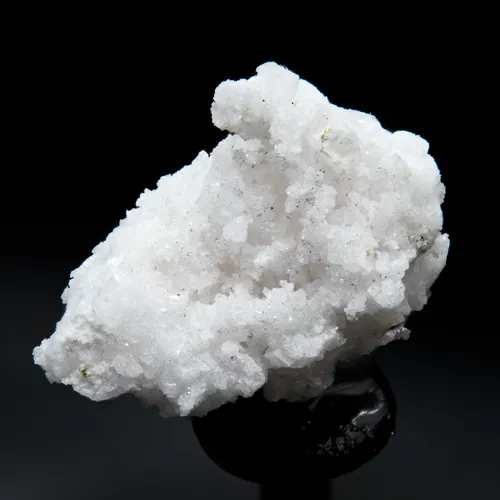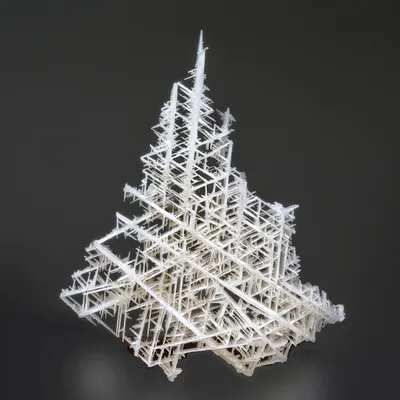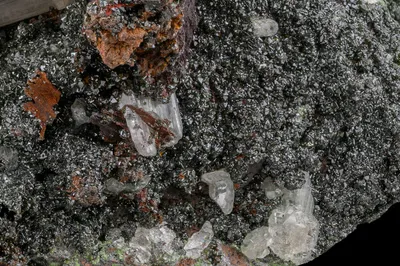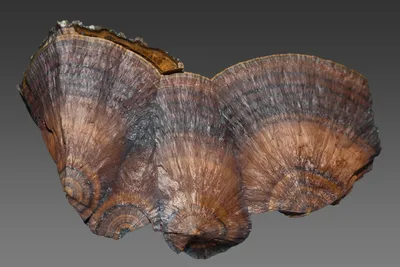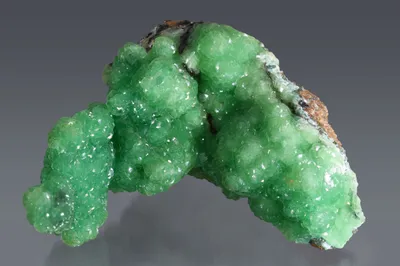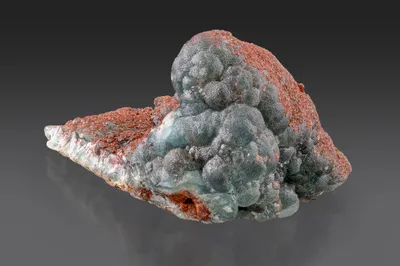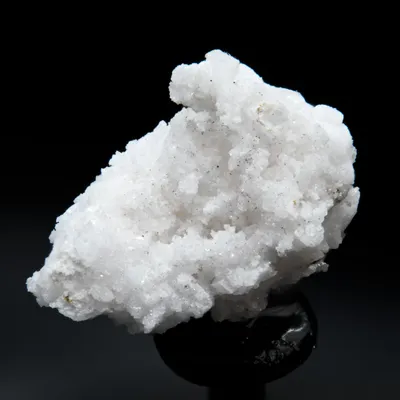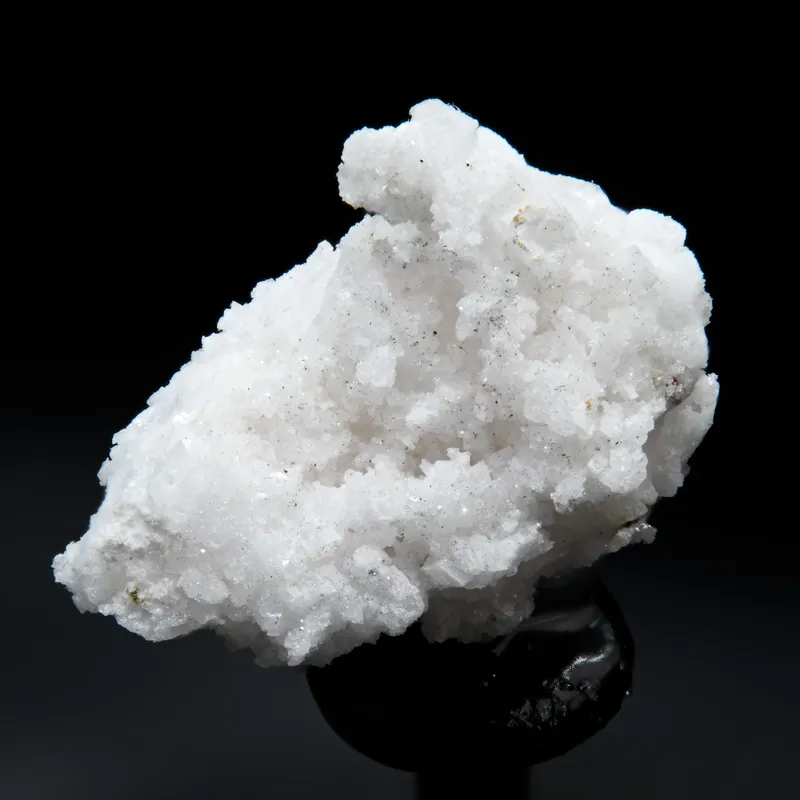
Image Credit: Chris Emproto
Mineral Species
Minrecordite
Type Locality
Yes
Composition
CaZn(CO3)2
Crystal System
Trigonal
Status at Tsumeb
Confirmed (type locality)
Abundance
Very rare
Distribution
Second oxidation zone
Paragenesis
Supergene
Entry Number
Species; TSNB243
Type Mineralogy
Minrecordite was first discovered on a specimen of Tsumeb dioptase received by Italian mineral collector Gian Carlo Fioravanti as part of an exchange. White microcrystals on the dioptase were provisionally labelled as willemite, perhaps (?) on the basis of an earlier qualitative analysis. Later scrutiny revealed that the habit of these crystals was quite unlike willemite and subsequent analysis indicated that they constituted a new member of the dolomite group in which magnesium is substantially replaced by zinc. Minrecordite, IMA 1980-096, was described by Garavelli et al. (1982) and named in honour of the journal The Mineralogical Record, in recognition of its role in promoting collaboration between amateur and professional mineralogists and a better knowledge of Tsumeb mineralogy. The holotype specimen is conserved at the museum of the Università di Bari, Dipartimento Geomineralogica, Italy (catalogue number HO-4/81).
General Notes
Minrecordite is a very elusive mineral that is readily confused with dolomite. Quantitative analysis is required for identification and many putative minrecordite specimens turn out to be dolomite or zinc-rich dolomite (Southwood 2020). While there is no doubt that minrecordite is a valid mineral species at Tsumeb, it usually occurs as compositional zones or nanodomains within crystals that have a bulk composition consistent with zinc-rich dolomite. Specimens labelled as minrecordite, therefore, should be regarded with caution unless they have been subjected to appropriate analysis.
A magnesian variety of minrecordite was also reported by Garavelli et al. (1982), containing 0.134 APFU Mg (compared with 0.067 APFU in the IMA-approved species composition). They noted that magnesian minrecordite has a lower refractive index and specific gravity, and a larger unit cell, compared with "normal" minrecordite.
The location in the mine from which the type specimen was recovered is not recorded, but the paragenesis is typical of the middle of the second oxidation zone (29 through 32 levels). Minrecordite forms minute, twisted, pearly, lustrous, colourless to milky-white, saddle-shaped rhombohedral crystals to 0.5 mm (Garavelli et al. 1982). In specimen material, minrecordite from Tsumeb is almost invariably associated with dioptase, although there is no apparent reason why it might not occur in other parageneses.
Indeed Keller (1984) suggested a likelihood that minrecordite would be found in other parageneses, particularly with smithsonite in decomposed dolostone country rock, where Keller had already identified zinc-enriched dolomite.
Lombaard et al. (1986) listed minrecordite as an extremely rare mineral. Gebhard (1999) merely noted the relationship between dolomite and minrecordite with the latter considered "very rare". Electron microprobe analyses of putative minrecordite specimens supports the view that minrecordite is indeed an extremely rare species (Southwood 2020; unpublished data).
Von Bezing et al. (2016; page 414) figured a specimen of alleged minrecordite associated with rosasite from the collection of Marshal Sussman; the means of identification, however, was not indicated.
A specimen offered for auction by German mineralogist and dealer Joy Désor, in September 2021, included microcrystals of minrecordite and otavite associated with cerussite (www.e-rocks.com; accessed September 2021). Both the otavite and the minrecordite were confirmed by EDS and Raman spectroscopy. The minrecordite occurred as a zone between underlying cerussite and overlying otavite, rather than as discreet crystals (Joy Désor pers. comm. to M. Southwood, February 2023). No indication was given for the location in the mine from which this specimen was recovered. It is a significant combination, however, because minrecordite is hitherto unknown from the first oxidation zone and otavite has not been reported from the second.
Désor has also identified crystals with a bulk composition of minrecordite in association with smithsonite and willemite (Joy Désor pers. comm. to M. Southwood, February 2023).
Garavelli et al. (1982) propose the following paragenetic sequence for the "typical" minrecordite association:
(calcite + zincian dolomite + duftite) >> dioptase(i) >> magnesian minrecordite (sometimes with cerussite and calcite) >> minrecordite >> dioptase(ii)
Associated Minerals
calcite; cerussite; conichalcite; cotunnite (?); dioptase; dolomite; duftite; goethite; hematite; malachite; otavite; smithsonite; willemite
